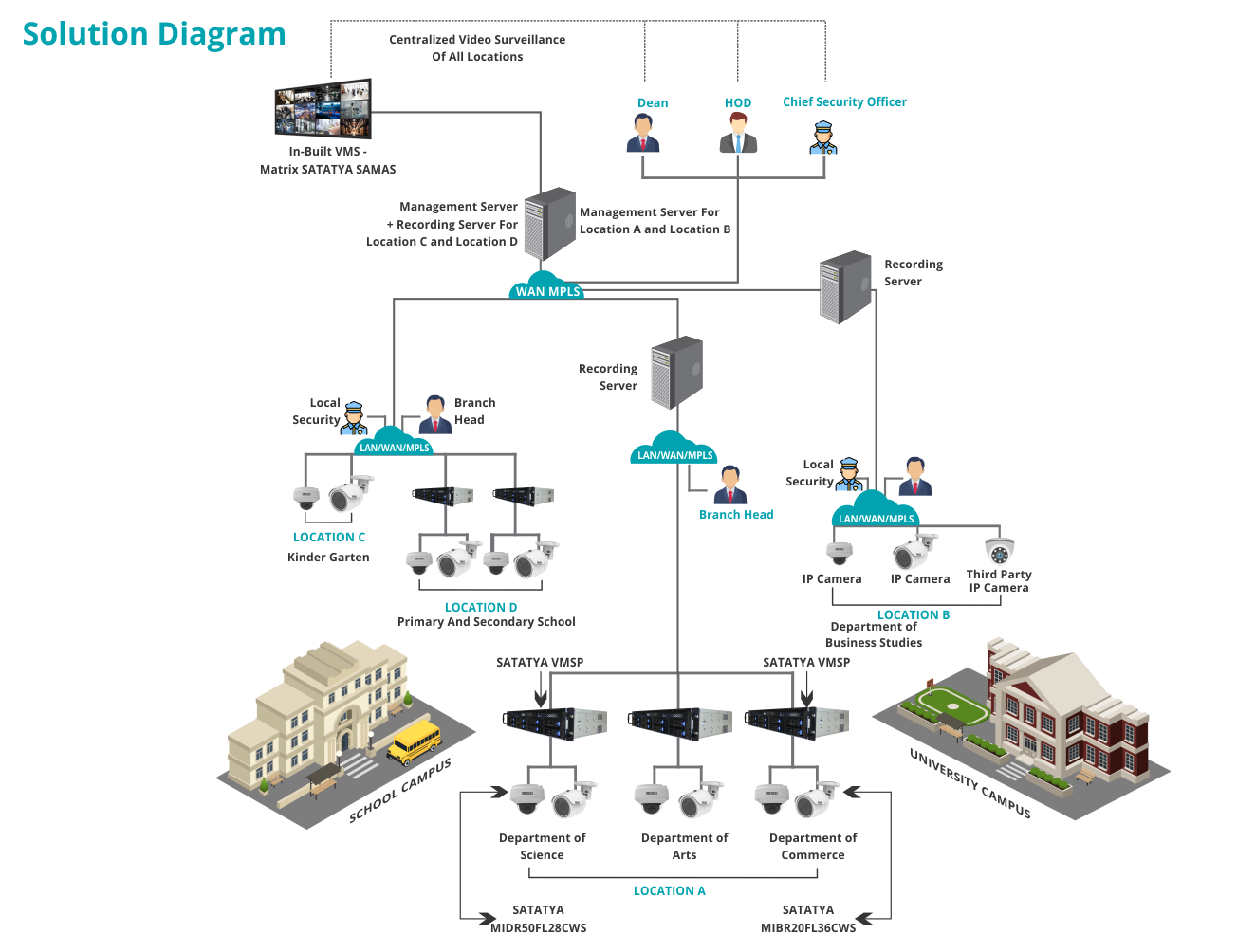
Founded in 1952, the group of Educational Institutes, located in Meenambakkam near Chennai, Tamil Nadu, India, stands as one of the oldest and most distinguished institutions in the country. Over the years, they have established primary and secondary schools as well as colleges in Chennai, offering a diverse range of courses in science, arts, commerce, and business management. As of 2016, they have evolved into a leading research and post-graduate institution, boasting three dedicated research departments in physics, mathematics, and economics.
Situated on a sprawling 40+ acre campus, the educational institutes cater to over 9000+ students and employ a dedicated faculty of 350+ staff members. They have over 100 classrooms, indoor and outdoor stadiums, auditoriums, seminar halls, libraries, labs and hostel facilities.
Given the expansive infrastructure and the substantial student population, ensuring the safety and security of the premises became a top priority. Despite a previous installation of a competitor’s video surveillance system, the coverage was limited. Consequently, they recognized the need for a comprehensive solution that could effectively monitor all areas, including schools, colleges, and hostel facilities. They needed a solution that would not only provide thorough coverage but also enable both local and centralized monitoring from a single location.
- Securing more than 9000+ students and staff across the premises
- Needed a centralized video surveillance solution that could monitor the schools and college premises from one location
- Widespread infrastructure of the schools and colleges including classrooms, auditoriums, playgrounds, and hostel premises was scattered, making centralized surveillance a challenge
- Previously installed competitor video surveillance systems had failed to provide extensive coverage in all the locations necessary on the premises
- Need for a large number of cameras and thus a large number of recording servers with higher RAM for scalability
- Competitor brands’ servers were based in China which wasn’t reliable enough – These could be leveraged by hackers to gain access to the devices and exploit further the path of attack to target the educational institutes’ environment
Matrix proposed its professional series of 2MP Dome IP cameras for securing the indoor premises of the educational institute- like classrooms, libraries, auditoriums, seminar halls, and admin offices. They provided comprehensive coverage in the indoor facilities of the campus. Similarly, 5MP Bullet IP cameras were proposed to guard the outdoor facilities and infrastructure of the campus. So over 600 cameras were deployed throughout the school and college premises, providing comprehensive coverage.
For recording and viewing the footage, Matrix experts proposed server-grade NVRs – VMSP. As Matrix VMSP comes with an in-built Video Management Software – Matrix SATATYA SAMAS, there was no need to install a separate software. This eased out the local and centralized monitoring requirements while ensuring a user-friendly GUI. Moreover, Matrix VMSP seamlessly integrated with the third-party IP Cameras already installed in the premises.
Matrix VMSP provided a centralized system management with well-defined user roles and rights. Its distributed architecture allowed centralized configuration, user-based login roles and rights, and an Audit Trail of user activities and IP addresses.

- Matrix IP Cameras provided comprehensive coverage throughout the premises
- Matrix VMSP comes with an in-built server and software – Matrix SATATYA SAMAS due to which no separate investments for software were required. This made centralized video surveillance very easy
- A particular user could see any camera installed at any location while sitting at any location
- Based in India, Matrix VMSP were more reliable than the competitors’ servers located in China, reducing the chances of hacking attempts
- Having four kinds of redundancies, Matrix VMSP ensured minimal system downtime even in case of network and power failures
- SATATYA MIBR20FL36CWS (470 Nos.)
2MP IR Bullet Camera with 3.6mm Fixed Lens - SATATYA MIDR50FL28CWS (142 Nos.)
2MP IR Dome Camera with 2.8mm Fixed Lens - SATATYA VMSP (5 Nos.)
128 Channel Enterprise NVR with 8 SATA Port - SATATYA SAMAS USER10
10 Concurrent User Licence for Smart Client and Mobile Client

